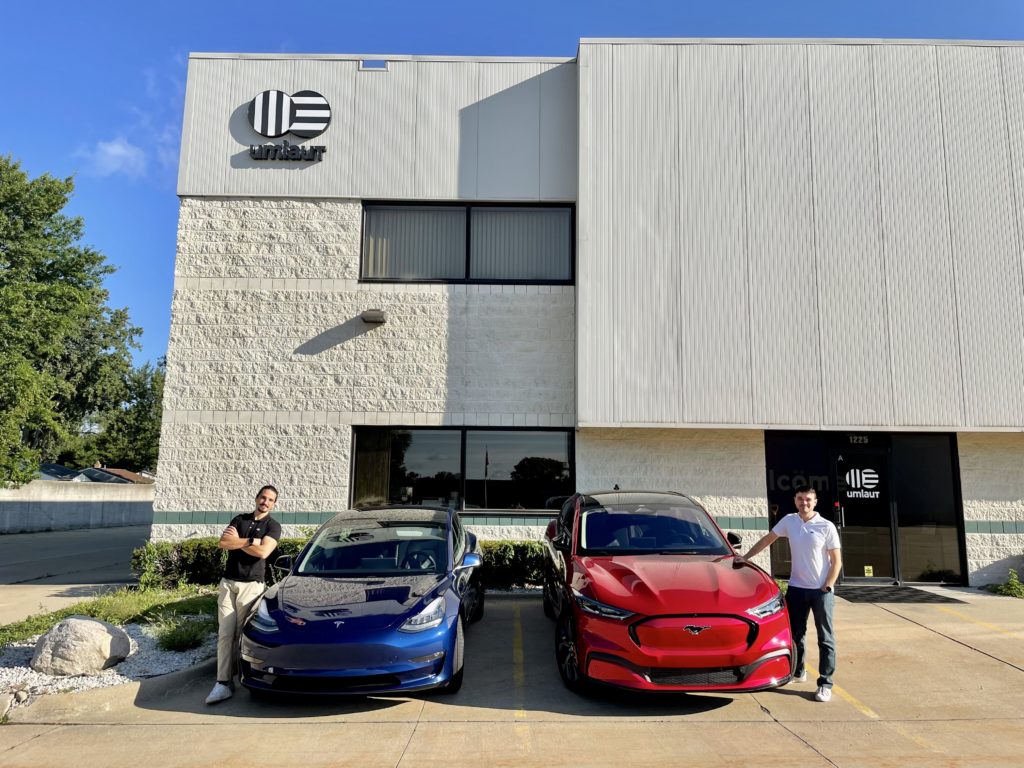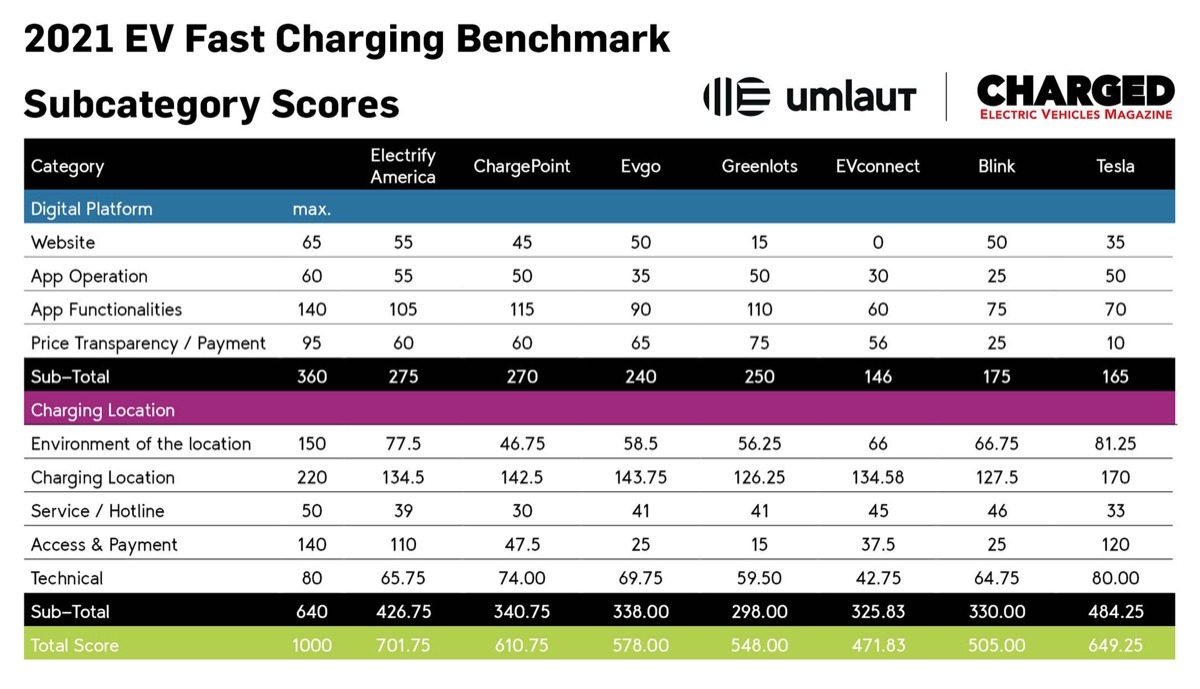
Tesla Superchargers Rank 1st in ‘Charger Location Experience’, Says U.S. Study

Tesla Superchargers are supposed to get upgraded speeds in North America this year, holding to a trend that the charging network is improving, as detailed in a new study by one firm.
A study conducted by consulting firm Umlaut found that U.S. EV charging is improving, despite the need to overcome a handful of challenges still yet, according to Automotive News.
The study compiled data from chargers including Tesla’s Superchargers, Volkswagen’s Electrify America, ChargePoint, EVgo, Blink Charging, EVConnect and Greenlots. This was the first year Tesla’s Superchargers were added to the mix.
The ranking found Electrify America’s charging stations to have the highest score when it came to ‘Digital Platform’, with Tesla’s Superchargers topping scores when it came to ‘Charging Location Experience.’

Charging Location Experience considers the following factors for the charging station environment and features, along with tech support, access and payment and technical performance:
- signage
- illumination
- ease of parking
- roofing/weather protection
- charging connector options (CCS, CHAdeMO, Tesla)
- charging power available
- amenities (restrooms, shops, restaurants)
- free WiFi
Tesla owners know that Supercharging offers the easiest and pain-free charging experience. All you have to do is plug in the charger and set how much you want to charge your battery. The payment and authorization is all handled automatically without any user input required. To stop charging, you just unplug the charger and drive away.
Study co-author Hakan Ekman noted that charging is improving across the board as the years go on. In the study, Ekman said, “Across all categories we see the system becoming more mature and stable.”
The firm also conducted a similar study in 2020, primarily in California.
Umlaut said there were challenges with adapting Tesla to the EV charging network study.
“We do not simply count the number of EV models with different connectors—that methodology wouldn’t make sense. Instead, we looked at the market share, how many EVs with the different connectors are actually on the road, and what percentage each charging network can serve. That’s actually quite a bit for Superchargers because the number of Teslas on the road in the US is 75% to 80% of EVs,” said explained Christian Sussbauer, one of umlaut’s EV experts who led the study.
“The bigger challenge with including Tesla in the 2021 Benchmark is that none of the open network’s scores are affected by the vehicles being used to test them,” says the study’s authors.
“So, to include Tesla, all the data and info available on the vehicle was ignored as well, and only the Supercharger locations, along with the charging info available in Tesla’s app and website, were considered,” they explained.
“This will probably be the most controversial part of the methodology, as Tesla drivers will be quick to point out that one rarely uses Tesla’s app or website in the same way one would with the other networks, because most of that useful charging and navigation info is elegantly built into the vehicles. But, again, that’s not what was tested here. This is not a comment on the Tesla ownership experience, it is an attempt to compare the DC fast charging networks in the most useful way. To do so, Superchargers were considered a standalone charging network independent of Tesla vehicles,” said Umlaut.

Testing for 2021, the team used a Tesla Model 3 and a Ford Mach-E, though it didn’t account for the varied performance between the vehicles and others.
Amidst plans to open its charging network to other brands, Tesla has started a pilot program for non-Tesla EV owners to charge at its Superchargers which is now available in the Netherlands, France and Norway.

